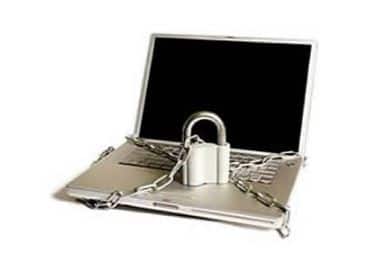by Mike Metz

Mike Metz, PhD
After a couple of go-rounds on this topic, it lends itself to even more consideration. What if the manufacturers and the big-box retailers do nothing and continue selling locked hearing aids? What would be a likely result if all manufacturers unlocked all software? What would result from actions in the “middle ground” between these extremes? And, who would profit most from each of these scenarios? Which is most likely?
Predictions of almost any kind are always precarious. And, they are almost always wrong. There are just too many variables to consider and way too many that are unknown. However, plunging ahead, let’s first consider how the hearing aid industry might be changed vis-a-vis locked software.
Possibility No. 1
One outcome could be that the retailers and most manufacturers would ignore the potential HIPAA violation and continue to sell hearing aids that cannot be accessed by clinicians for purposes of additional rehabilitation.
This might result in “public”, professional, and “consumer” sources making manufacturer-specific suggestions to “Big Box” customers. Referral advice could state the potential benefits of buying specific instruments that could be reprogrammed by clinicians in audiology clinics, encouraging follow-up for patients who are not experiencing sufficient benefits. Perhaps audiological rehabilitation would help these patients gain more from their instruments. Perhaps even the sales-oriented, large retailers would reluctantly embrace this approach, as successful use might increase and returns decrease.
Possibility No. 2
This change would involve all manufacturers opening their software to all clinicians in every outside clinic regardless of office affiliation. The patient has complete access to his or her own health files (HA program characteristics), and HIPAA regulations would be served.
This could also lead to standard programming cords or easy Bluetooth connectivity, access to basic amplification parameters, and greater patient understanding of the advantages of professional follow-up care. Patients would have lots of cost and treatment choices with any device, including PSAPs. Even insurers might take notice.
Possibilities In Between
Change between these extremes—whatever they may be—are more probable as the two above are very unlikely to occur. Recall that most fields take little steps when moving forward. Big, dramatic steps are difficult, even for enlightened, concerned professionals.
If audiology is to survive the coming turmoil, and fully participate in future hearing health care, it might be good practice to prepare in the present. Audiology speaks often and loudly about rehabilitation and the need for varying changes or protocols to maximize the care of those with hearing loss. The big box retailers and those who have neither the training nor the time to manage this follow-up are obviously not rendering this care. It would seem that there might be a potential symbiosis here.
If PSAPs, over-the-counter, and other DIY devices gain a portion of the hearing device market, and if there truly were a need for intervention beyond the sale and simple instruction of these devices, it would seem that this needed rehabilitation would be welcomed by third-party payers.
Billing codes already exist, even though third parties seldom pay on them. But, the existence of these codes would seem to imply that some sort of necessity existed at some time, otherwise why establish a code? Could an astute clinician eventually make use of these billing codes? (When a patient requests or is referred for a reasonable service, which is subsequently rendered, and third-party payment is denied, there are legal and ethical methods of assuring payment.)
Improving Care?
With all the disturbances in the hearing aid field, it might prove reassuring for patients and referral sources if the purchase of any amplification device could be made in many different places and manners, and if additional therapeutic services could be widely obtained from providers who are appropriately licensed. If follow-up care is really helpful for the hearing impaired, this ought to be an “easy sell”.
Additional patient benefit might result from the public realizing that not all hearing problems can be resolved with the same rehabilitative care. Some difficulties in audition stem from problems that we have yet to measure, let alone solve.
So, this openness could lead to more thorough investigation of the nature of each hearing loss, which could lead to more complete testing, which could then result in better approaches to specific problems, which then leads to…well, you see, don’t you? Little steps.
With some thought, one can come up with several more reasons that information accessibility—transparency—is a really good thing for the hearing impaired patient and may lead to increased level of amplification success. And, lest you forget, when patients succeed, we will also do “good” for ourselves—any way you wish to characterize your own “good”.
Mike Metz, PhD, has been a practicing audiologist for over 45 years, having taught in several university settings and, in partnership with Bob Sandlin, providing continuing education for audiology and dispensing in California for over 3 decades. Mike owned and operated a private practice in Southern California for over 30 years. He has been professionally active in such areas as electric response testing, hearing conservation, hearing aid dispensing, and legal/ethical issues. He continues to practice in a limited manner in Irvine, California.
*image courtesy fieldcompanies







It upsets me that I don’t have access to fine tune my own hearing aids, and for what hearing aids are going for the should give the consumer full access to his product. I only say this cause it is time consuming to keep going back and four to the audiologist. It also upsets me that hearing aids are so over priced. Why is it with all out advancement Hearing aid companies like to rob people instead of helping.